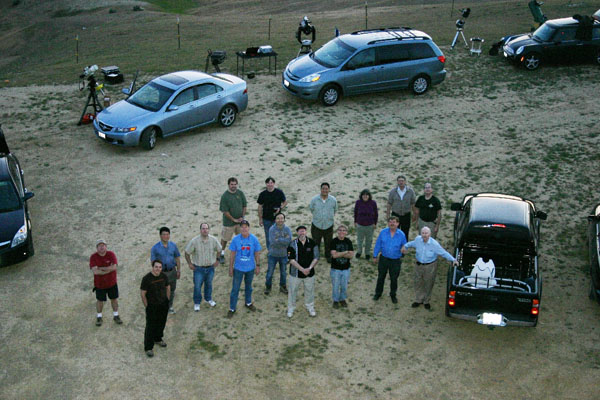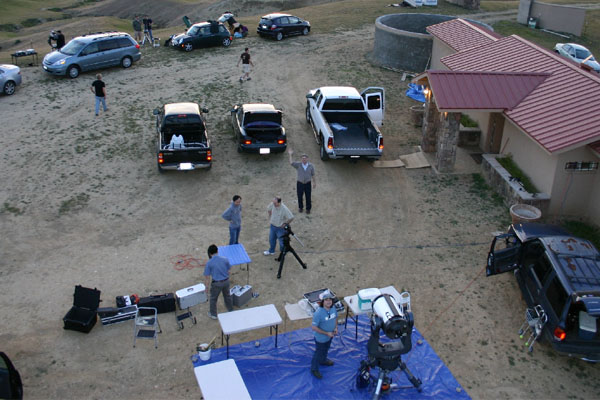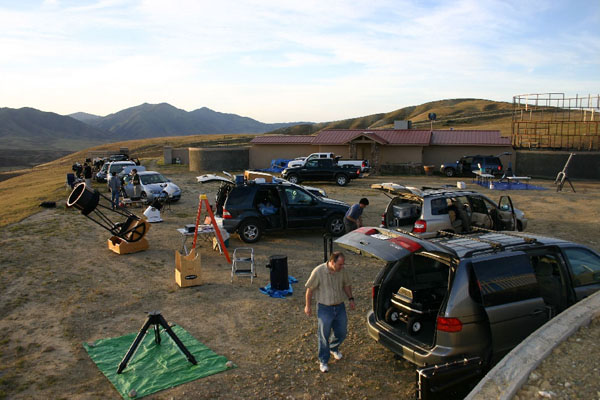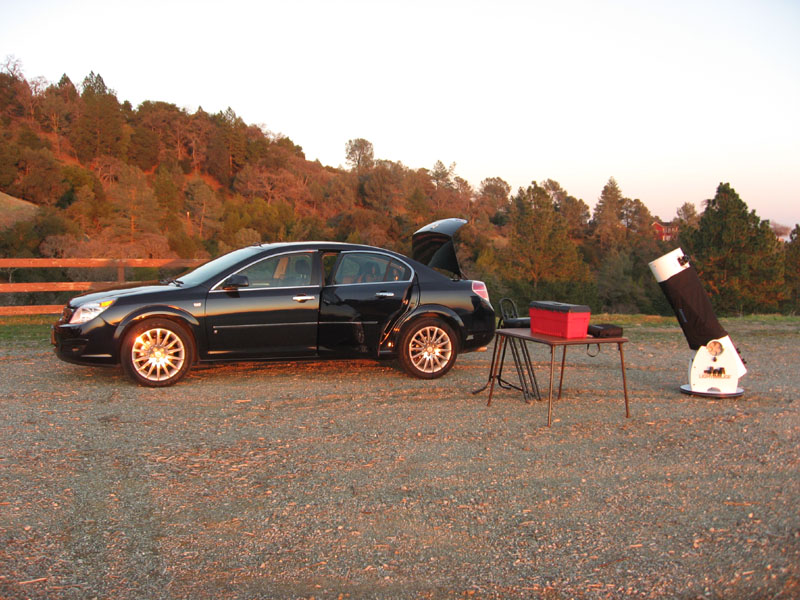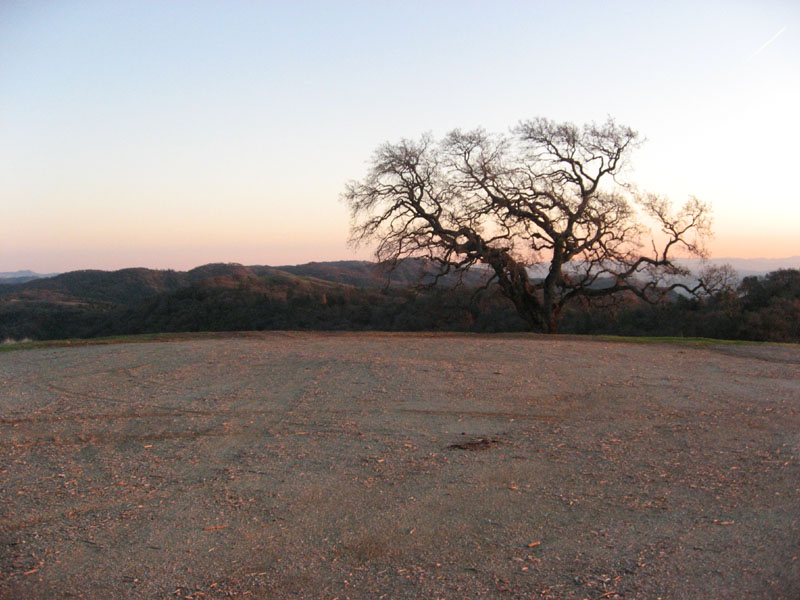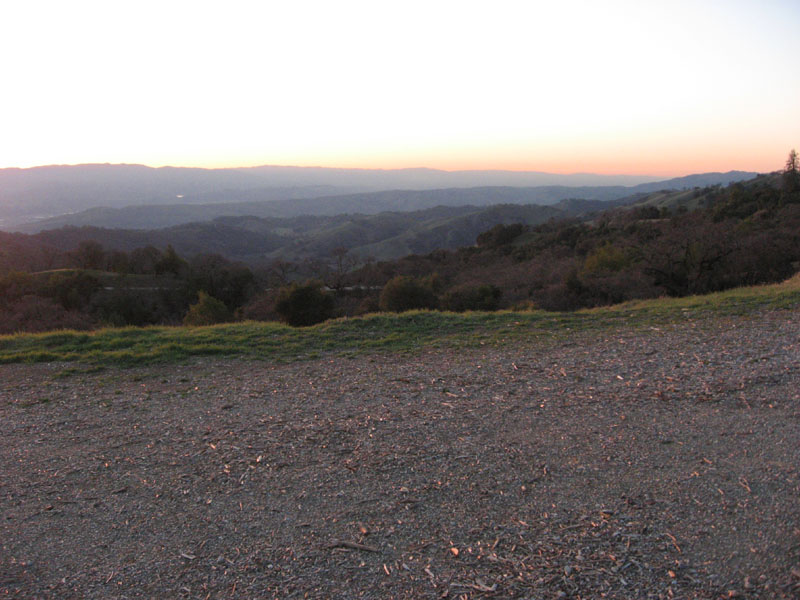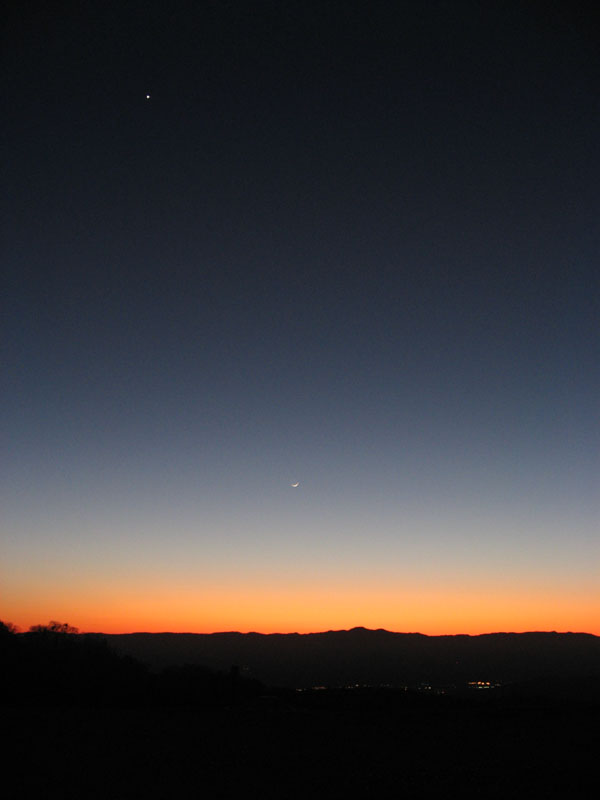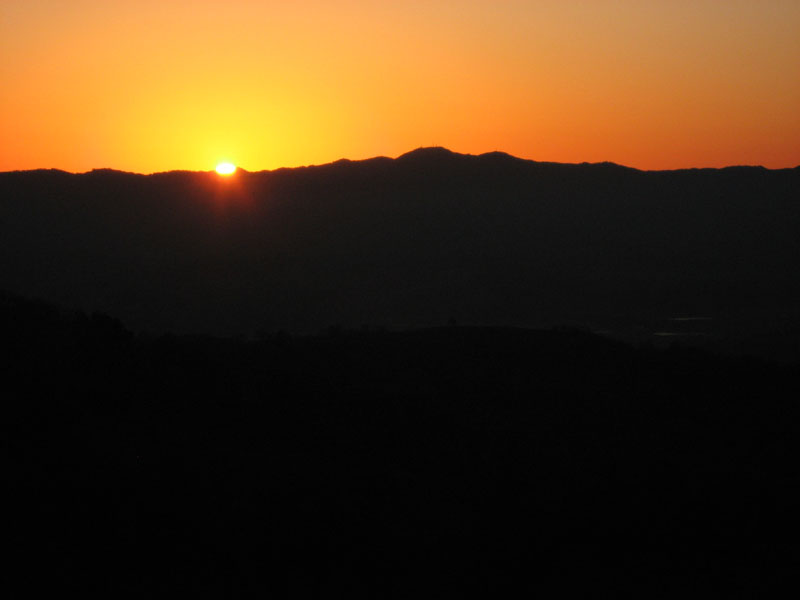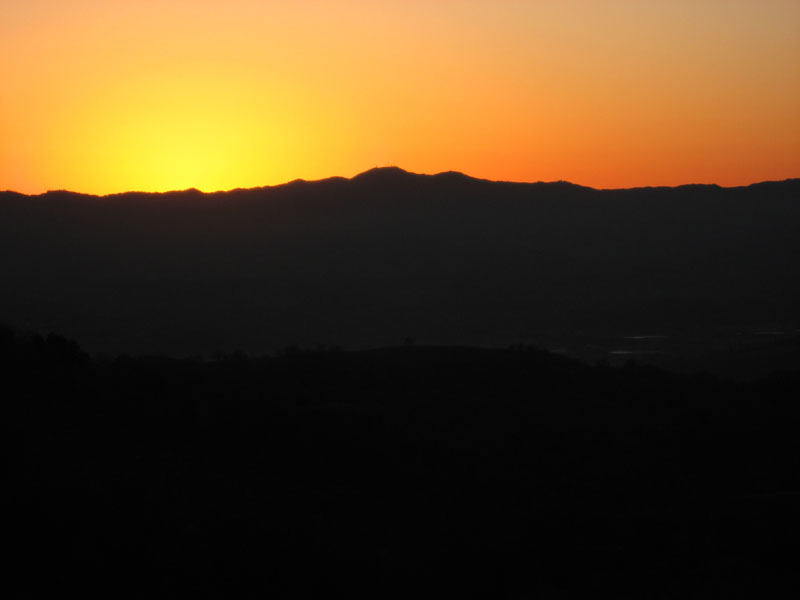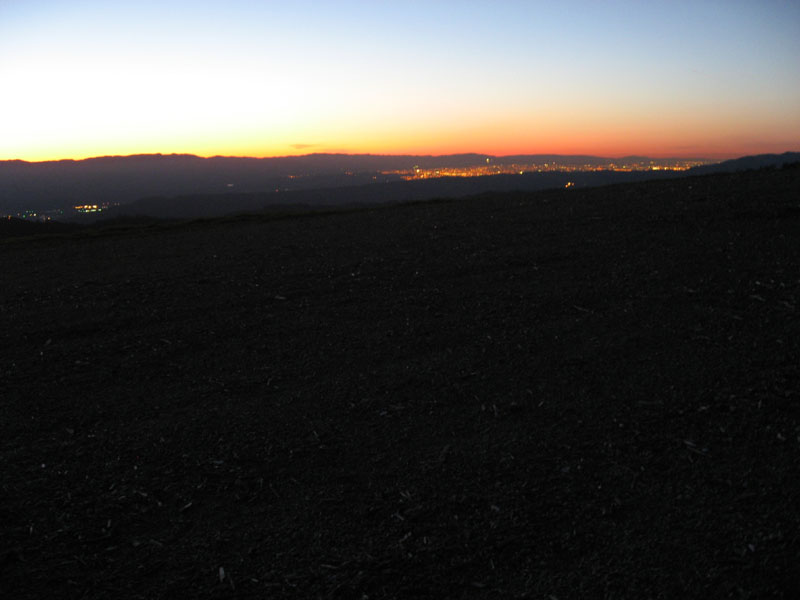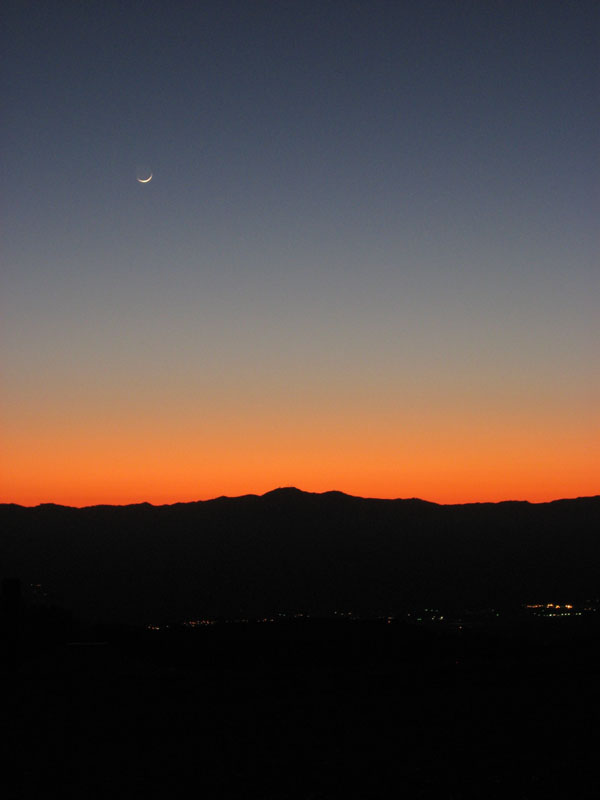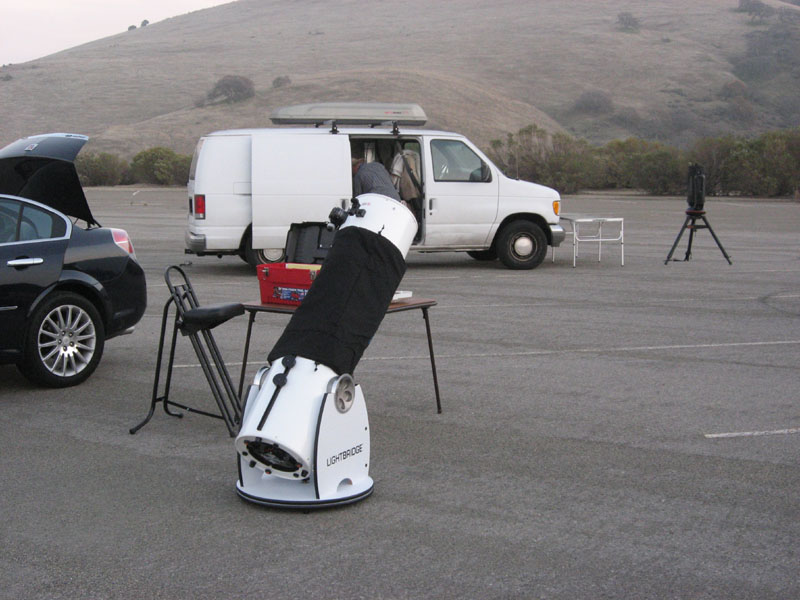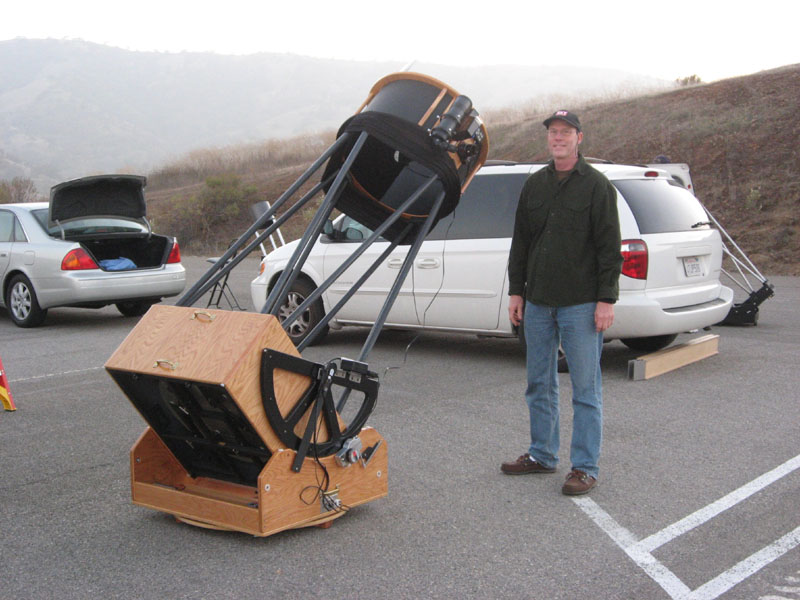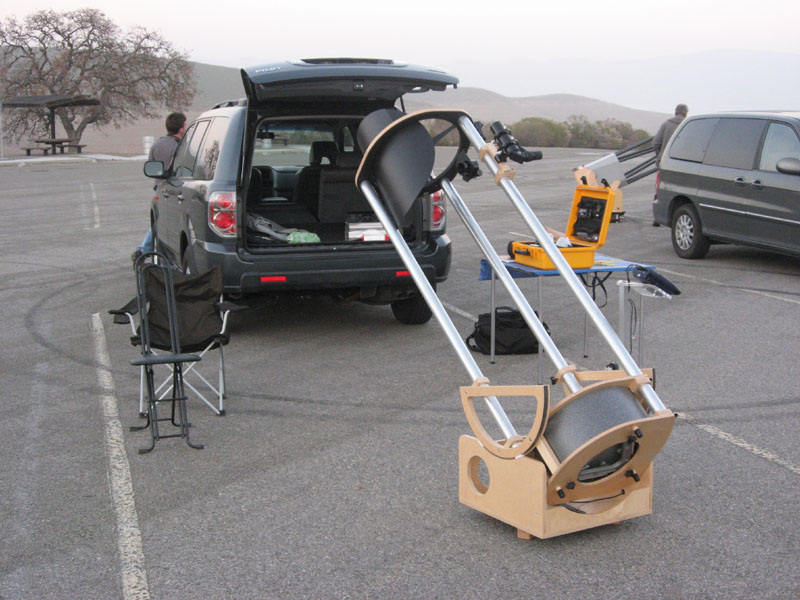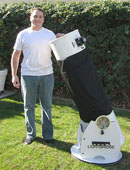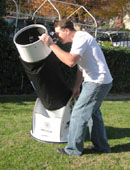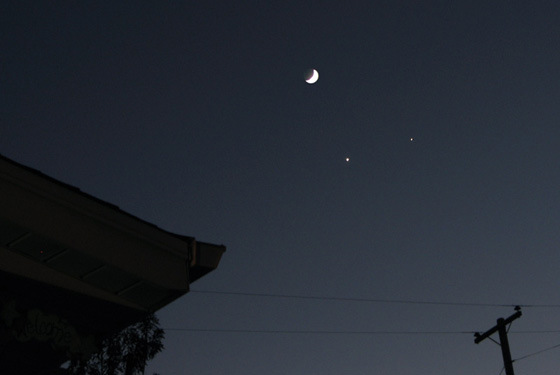I arrived at D.A.R.C. observatory around 7pm. Dr. Lee Hoglan and his father were already there, along with Albert Smith and his wife. Rogelio and his family joined us a bit later. It was a little windy around sunset, but the wind died down around 9pm. While waiting for the sky to get dark, I pointed my telescope toward Sirius, which was about 25 degrees above the horizon. Sirius’ companion was seen pretty easily, which is always a sign of very good seeing. Saturn was absolutely breathtaking, showing a wealth of incredibly fine details. Later on, as the sky got darker, the zodiacal light became very obvious, reaching as high as 60 degrees above the western horizon, intersecting the milky way around Gemini.
Around 9pm, the sky turned dark like I’ve never seen it. Albert got an SQM reading of 21.84! It seemed a bit high to me, but Albert says he regularly gets readings of 21.1 at Fremont Peak, which is about correct. Under such dark skies, a lot of the galaxies I observed were starting to show intricate details.
Among the highlights of the night, I logged 27 new Herschel 400 objects. We also looked at a few bright deep sky objects: M101, M81/M82, M51, and later on, M83 all offered jaw dropping views.
Around 2am, Rogelio asked me what those “clouds” were toward the south east. The summer milky way was just … unrecognizable! All the faint extensions, all the dark nebulae that you don’t usually get to see at local sites around the bay area, started to appear. It truly looked like a photograph!
We finished off the night around 2:30am with a few more bright deep sky objects from the summer sky: M57, M27, M13, M17, M8, M20.
A big thank you to Dr. Lee Hoglan for the generous invitation! Last night was truly a night to remember.
P.S: still no sign of the elusive Gegenshein…
Location: D.A.R.C. Observatory [Elevation 1400ft]
Telescope: Meade Lightbridge 12″ F/5
Eyepieces used:
- Televue Panoptic 27mm (56x - 1.2° TFOV)
- Televue Nagler 16mm type 5 (95x - 52′ TFOV)
- Televue Nagler 9mm type 6 (169x - 29′ TFOV)
- Televue Nagler 7mm type 6 (217x - 22′ TFOV)
- Televue Nagler 5mm type 6 (305x - 16′ TFOV)
(All times are PST)
NGC 4041 GX UMa 12h02m44.4s +62°05’08″ 11.6 mag 09:20p
Fairly bright, round, non stellar core, gradually fainter toward the edge.
NGC 4036 GX UMa 12h01m59.2s +61°50’38″ 11.6 mag 09:25p
Elongated 4×1 E-W with a fairly bright stellar core.
NGC 3610 GX UMa 11h19m00.9s +58°44’10″ 11.6 mag 09:35p
Bright almost stellar core. Faint halo slightly elongated NW-SE.
NGC 3613 GX UMa 11h19m11.6s +57°56’59″ 11.7 mag 09:55p
Fairly bright almost stellar core. Faint halo elongated 3×1 E-W. Forms a nice trio of galaxies with NGC 3619 about 15′ SSE, and much fainter NGC 3625, about 5′ E of NGC 3619.
NGC 3619 GX UMa 11h19m56.4s +57°42’31″ 12.5 mag 09:55p
Fairly faint stellar core. Very faint round halo. Forms a nice trio of galaxies with NGC 3613 about 15′ NNW, and much fainter NGC 3625, about 5′ E.
NGC 3898 GX UMa 11h49m48.0s +56°01’54″ 11.3 mag 10:05p
Fairly bright non stellar core. Very faint halo elongated 2×1 E-W.
NGC 3982 GX UMa 11h57m00.4s +55°04’22″ 11.8 mag 10:10p
Fairly faint, very uniform, slightly elongated NE-SW. Very faint stellar nucleus. At 95x, 52′ TFOV, no less than 5 galaxies are visible in one eyepiece: NGC 3998, NGC 3990, NGC 3977, NGC 3972 and NGC 3982.
NGC 3998 GX UMa 11h58m28.2s +55°24’05″ 11.4 mag 10:10p
Fairly bright almost stellar core. Faint uniform halo slightly elongated NW-SE. Forms a tight pair with NGC 3990. At 95x, 52′ TFOV, no less than 5 galaxies are visible in one eyepiece: NGC 3998, NGC 3990, NGC 3977, NGC 3972 and NGC 3982.
NGC 3992 (M 109) GX UMa 11h58m07.8s +53°19’20″ 10.5 mag 10:20p
Fairly bright non stellar core. Pretty large and bright halo, elongated 4×1 ENE-WSW. Hints of spiral structure. Fairly bright superimposed star 1′ NNW of the nucleus.
NGC 3631 GX UMa 11h21m36.7s +53°07’05″ 10.7 mag 10:35p
Fairly bright round non stellar core. Round halo, appears slightly mottled.
NGC 3729 GX UMa 11h34m23.0s +53°04’24″ 11.7 mag 10:45p
Fairly uniform, elongated 2×1 N-S. Fairly bright superimposed star 1′ S. Forms a nice couple with NGC 3718.
NGC 4102 GX UMa 12h06m55.0s +52°39’29″ 12.1 mag 11:00p
Small, with a fairly bright almost stellar core. The core seems slightly elongated E-W while the halo is elongated 2×1 NE-SW. Fairly bright stars 1′ W and 2′ E.
NGC 3953 GX UMa 11h54m21.1s +52°16’28″ 10.5 mag 11:05p
Fairly bright non stellar core. Fairly bright halo elongated 3×1 NE-SW. Fairly faint superimposed stars 1′ NW and 1′ ENE of the nucleus.
NGC 4026 GX UMa 11h59m56.8s +50°54’34″ 11.7 mag 11:15p
Elongated 5×1 N-S. Fairly bright non stellar core.
NGC 3949 GX UMa 11h54m13.6s +47°48’20″ 11.4 mag 11:20p
Fairly uniform, elongated 2×1 E-W. Faint nucleus seen at higher magnification (217x)
NGC 3938 GX UMa 11h53m20.9s +44°04’08″ 10.9 mag 11:45p
Round, faint, uniform nebulosity. Faint stellar core. Faint superimposed star about 3′ WSW.
NGC 3675 GX UMa 11h26m41.1s +43°32’05″ 11.0 mag 11:50p
Elongated 4×1 N-S. Fairly bright non stellar core.
NGC 5322 GX UMa 13h49m37.5s +60°08’30″ 11.0 mag 12:40a
Elongated 2×1 E-W. Fairly bright, fairly large core. Faint superimposed star <1' S and slightly brighter one about 3' E of the nucleus.
NGC 5631 GX UMa 14h26m53.9s +56°32’15″ 12.5 mag 12:50a
Fairly bright non stellar core. Round uniform halo.
NGC 5473 GX UMa 14h05m06.1s +54°50’46″ 12.4 mag 12:55a
Small, round, pretty faint, with a non stellar core. Very faint superimposed star <1' E. I later found out this was a mag 15.6 star, which is right at the limit of detection for a 12" scope on a perfect night!
NGC 5474 GX UMa 14h05m24.6s +53°36’53″ 11.5 mag 01:10a
Fairly faint and uniform, with a weak condensation located at the northen edge of the halo. Faint superimposed star (mag 14.6) 1′ NE.
NGC 5694 GC Hya 14h40m10.8s -26°34’53″ 10.2 mag 01:25a
Small, bright, round, gradually brighter toward the center, unresolved.
NGC 4088 GX UMa 12h06m04.9s +50°29’13″ 11.3 mag 01:30a
Elongated 3×1 ENE-WSW. Fairly uniform with a faint stellar nucleus. The halo does not appear perfectly uniform, and shows hints of 2 curved arms. Forms a nice couple with NGC 4085 located about 10′ S.
NGC 4085 GX UMa 12h05m53.9s +50°18’01″ 12.3 mag 01:40a
Fairly faint, uniform, elongated 4×1 E-W. Forms a nice couple with NGC 4088 located about 10′ N.
NGC 4051 GX UMa 12h03m40.8s +44°28’42″ 10.8 mag 01:55a
Elongated 3×1 NW-SE. Fairly bright stellar core. Two large spiral arms seen at 169x.
NGC 3941 GX UMa 11h53m26.7s +36°56’00″ 11.3 mag 02:10a
Slightly elongated N-S. Fairly bright, large, round core.
NGC 3813 GX UMa 11h41m50.4s +36°29’38″ 12.3 mag 02:15a
Elongated 3×1 E-W. Fairly uniform. Fairly faint (mag 14.3) superimposed star 2′ E, right at the eastern edge of the halo.
